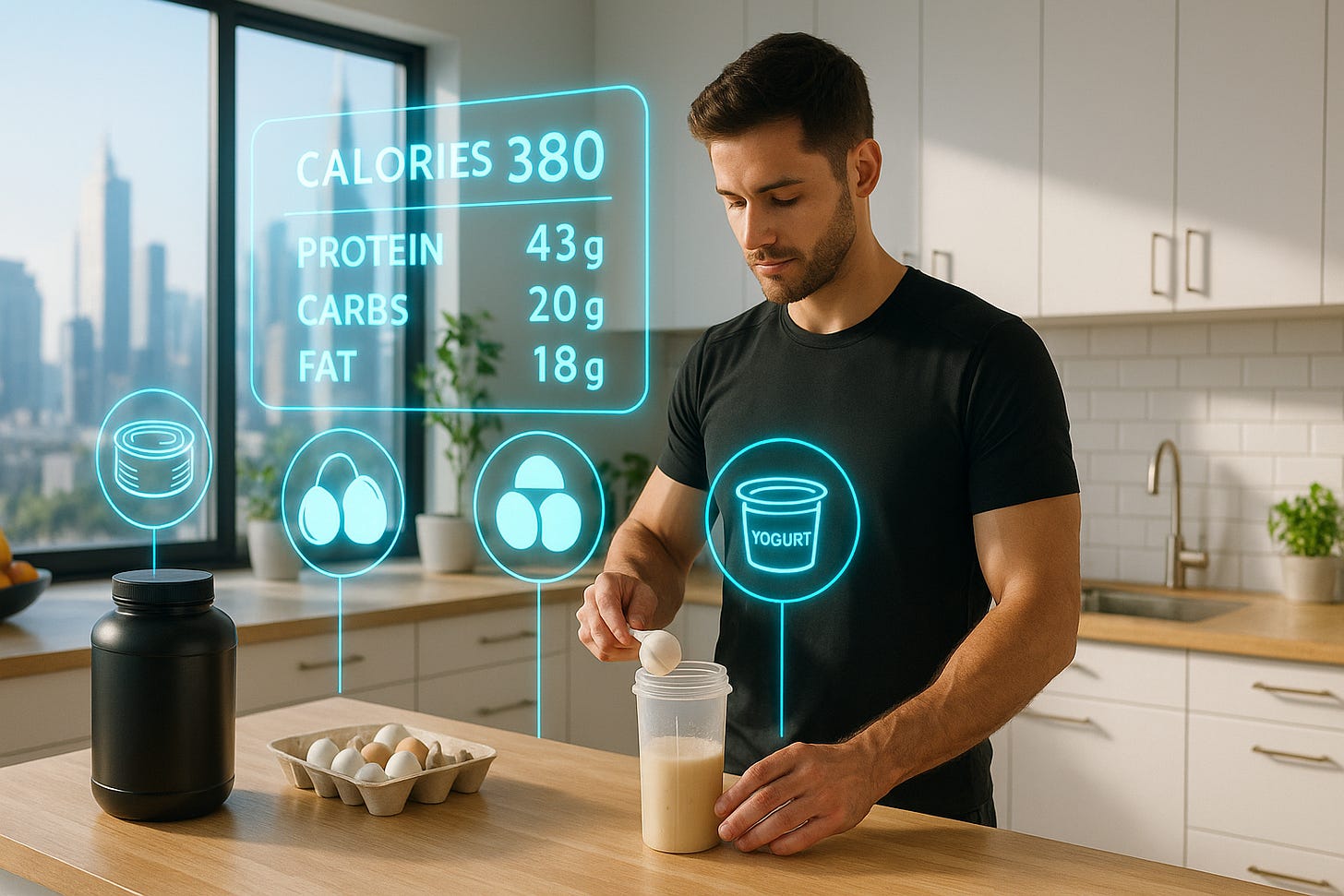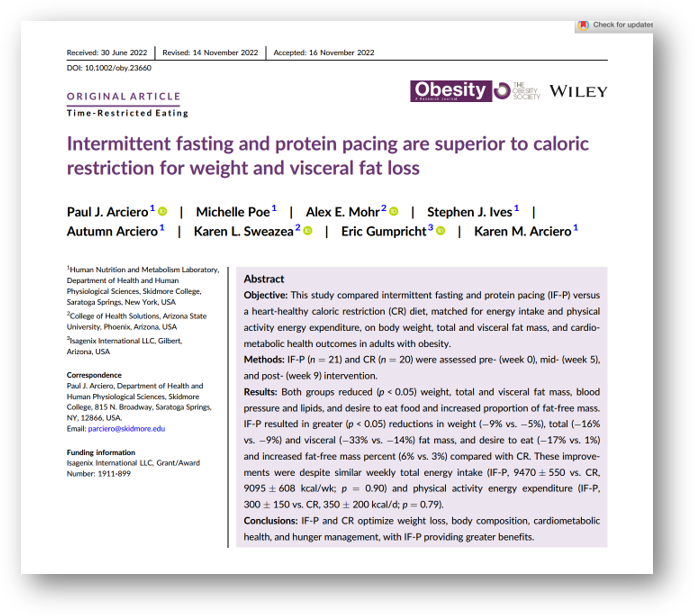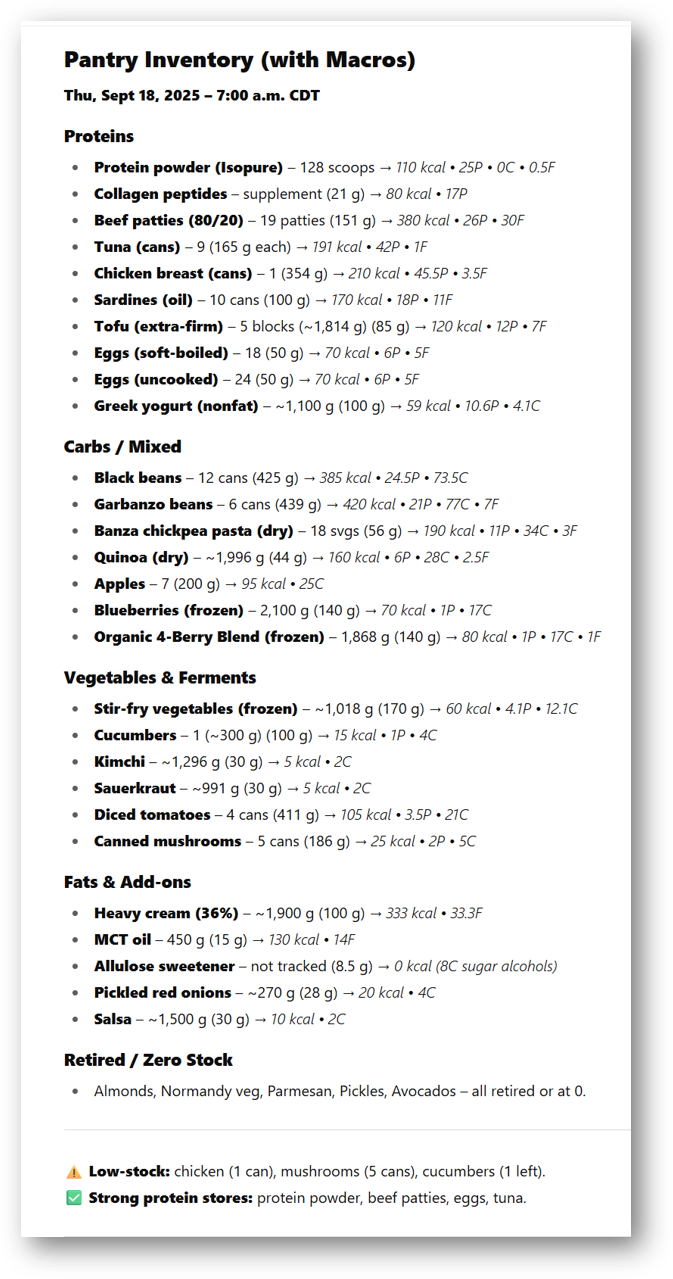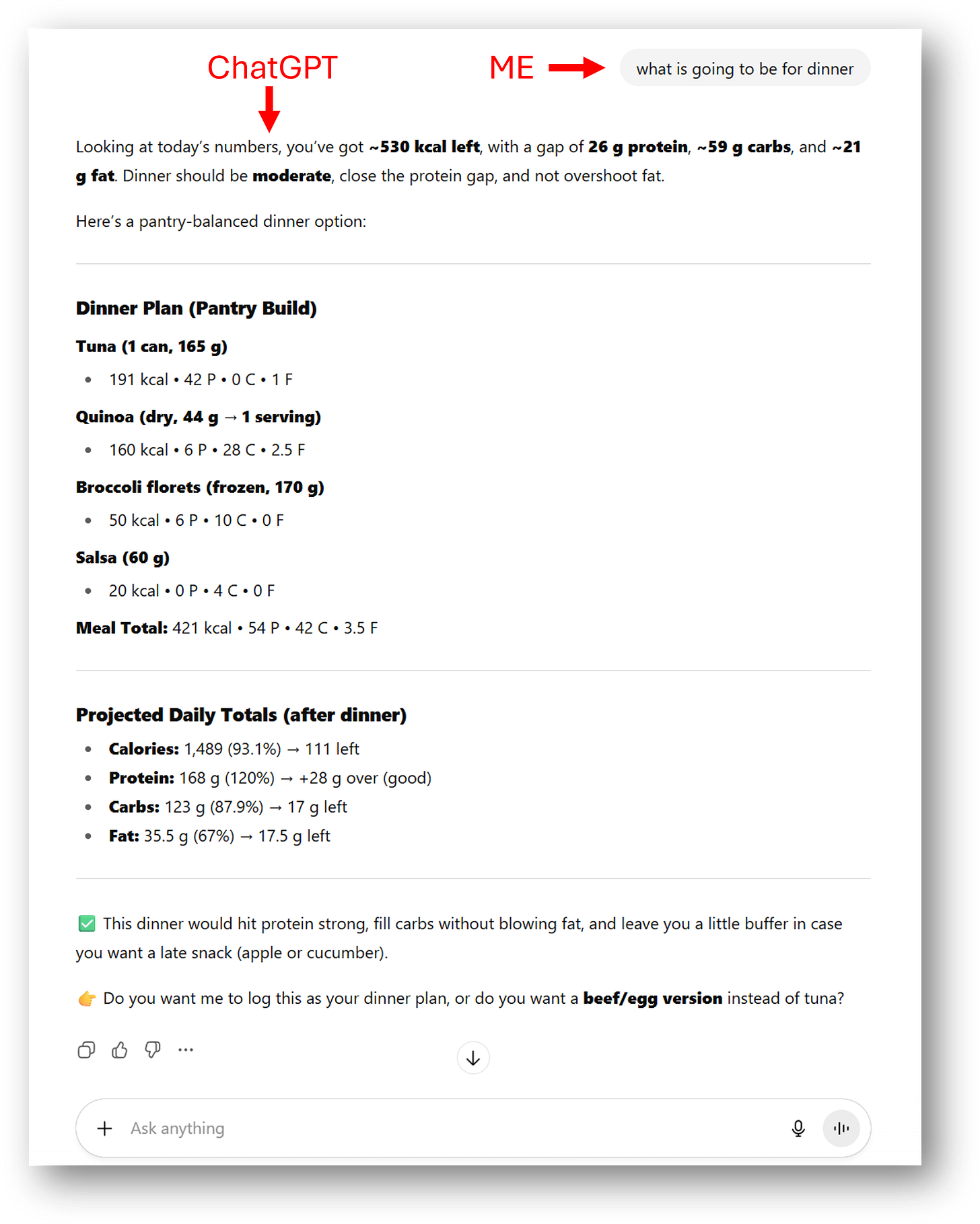In July 2025, after my bladder cancer surgery and chemo, I realized I needed a better way to eat. That health scare is what finally made me take all of this seriously.
I was back where I always end up — about 215–220 pounds, which is a lot when you’re 5'7". I’d already tried just about everything: keto (which left me nauseous from the constant fat), paleo, intermittent fasting, extended fasting, even the GLP-1 drug Wegovy at $1,200 a month without insurance (thankfully I was covered). I even gave carnivore a shot — a little better, but I still never felt good on it. Wegovy helped with appetite but brought constipation and GI issues. Nothing ever felt sustainable. At that weight, I don’t just feel heavy, I feel embarrassed — like I’m carrying a version of myself I don’t want.
I didn’t need another short-term fix. I wanted a system I could actually live inside of.
What the Study Showed
The whole thing started when I came across a video by Thomas DeLauer breaking down a new fasting and protein-pacing study. He was convincing, so I decided to dig deeper. I watched a couple more videos on the topic, then went straight to the source — the published study out of Skidmore College in Obesity.
It compared standard calorie restriction to intermittent fasting combined with protein pacing.
Fasting group design: 36–60 hour fasts once or twice a week, with a small protein allowance (~400 kcal) during the fast.
Eating days: ~1,800 kcal, 35% protein / 35% carbs / 30% fat, split into 4 protein-rich meals.
Results:
33% reduction in visceral fat (vs. 14% with calorie restriction)
23% reduction in abdominal fat
8.5% total body fat lost in 8 weeks
Hunger dropped 17% (while it rose in the calorie-restriction group)
The results amazed me. Not only did participants lose more fat, but their hunger actually went down. That was the opposite of every diet I’d ever been on.
Here is a link to DeLauer’s video so you can watch it yourself.
Building the Project
That’s when I decided to make ChatGPT do the work. I created a project and loaded it with everything I could find on the study — the PubMed article, Thomas DeLauer’s breakdowns, and supporting nutrition papers. Then I spent about an hour taking pictures of every food I had at home — the cans, the tubs, the frozen bags — plus their nutrition labels. I told ChatGPT to keep this list as my pantry inventory. From that point on, it could create meals directly from what I actually owned, subtract items when I used them, and generate shopping lists when I was running low.
I even asked ChatGPT: what else should I buy to support this protocol? It gave me a list — kimchi, Greek yogurt, frozen berries, lean proteins, beans, tofu — things I wouldn’t have put together on my own. I went shopping with that list, stocked the kitchen, and for the first time it felt like I wasn’t guessing.
It wasn’t just a diet anymore. It was an assistant — a system that handled the rules, while I just followed them.
How I Adapted It
I built my version around the study’s framework, then trimmed it to my life.
Eating days: I started at 1,800 calories, then dropped to 1,600 after two weeks when ChatGPT pointed out that the study’s numbers weren’t magic — the deficit had to fit me. That’s when the scale started moving.
Fasting days: 400–500 calories, protein-priority. Usually whey scoops, sometimes tuna or eggs.
Protein pacing: 3–4 meals depending on day shift, night shift, or off days.
Macros: 35% protein (~140 g), 35% carbs (~140 g), 30% fat (~53 g).
It sounds complicated, but here’s where ChatGPT came in.
Letting ChatGPT Handle the Mechanics
I used to hate dieting because it was endless math. Keto, carnivore, or calorie restriction — I was always calculating nutrition and macros myself. Weighing food, punching numbers into an app, trying to guess what was in a restaurant meal. It was labor-intensive and I hated it.
Now it’s automatic and precise. ChatGPT runs the mechanics.
Pantry tracking: I take pictures of nutrition labels and note grams or cans. The pantry lives inside the chat. When I eat, it subtracts the right amount. When I’m low, it flags it. Shopping lists write themselves.
Restaurant meals: If I eat out, I just snap a photo of the menu. ChatGPT tells me what to order that fits the day’s macros. No guessing. No guilt.
Shift pacing: It knows how to pace my night shifts (big pre-shift meal, lighter mid-shift, almost nothing after) so I don’t graze through twelve hours of donuts and chips left in the break room.
Social eating: If I’m at a friend’s house or a barbecue, I just snap a picture of the plate. ChatGPT analyzes the photo and gives me the calories, protein, carbs, and fat.
The key is honesty. If I slip and snack — which only happens occasionally — I tell ChatGPT exactly what I ate. I bust myself. I don’t hold anything back, because that’s the only way the system can adjust. If I cheat and hide it, the numbers are off. If I’m honest, ChatGPT recalibrates immediately and keeps me aligned with the protocol.
Even with an occasional screwed-up meal — like the time I killed a bag of Cajun cheese curds — ChatGPT gets me back into alignment by adjusting the next meal or the next day. No spiraling, no “I blew it so I might as well quit.”
The Pantry as a Quartermaster
Having ChatGPT keep a live pantry has been one of the biggest breakthroughs. A can of tuna isn’t just “tuna” — it’s logged as 165 g, 191 kcal, 42 g protein, 1 g fat. Eggs are counted by the dozen, yogurt down to the gram. Retired trigger foods (like almonds) stay visible but at zero, so I don’t re-buy them without thinking.
It feels less like “dieting” and more like running a supply line. The pantry is my quartermaster. I just eat and record.
And the shopping list is a lifesaver. Instead of wandering Costco grabbing random things, I get a precise list straight from ChatGPT based on what’s low in my pantry. I’ve even asked it for new food ideas — what to buy that fits the plan — and it gives me options I wouldn’t have thought of. That’s how kimchi, blueberries, and tofu became regular players in my rotation.
Eating Out Without Derailing
Before, a restaurant meal could blow my whole day. One plate of Mexican food, and I’d torch 1,200 calories without realizing it. Now I don’t overthink. I take a picture of the menu, ChatGPT spits out the order. At Qdoba, that meant a burrito bowl balanced against the macros I had left. At Texas Roadhouse, it meant salmon with vegetables instead of a steak with loaded potatoes.
What’s surprising is how freeing it feels. The decision stress is gone.
Night Shifts Without Junk
Night shifts used to wreck me. I’d graze from 10 p.m. to 6 a.m. — chips, candy, whatever showed up in the break room. It wasn’t hunger; it was fatigue.
Now ChatGPT builds the pacing in advance:
Pre-shift: biggest meal (5–6 p.m.)
Mid-shift: lighter (2–3 a.m.)
Post-shift: often nothing, or a tiny snack
I just follow the plan. The grazing urge never gets the upper hand because the structure is already set.
Results So Far
Start (August 2025, post-surgery): 215 lbs
Now (Sept 18, 2025): 199 lbs
That’s 16 pounds down in about six weeks, while working shifts, eating out, and not killing myself with exercise. The study said hunger would go down, and it has. I don’t feel like I’m white-knuckling this. I feel like I’m finally living inside a system that works.
Why This Feels Different
This isn’t another diet where I’m chained to an app or running endless calculations. This is automatic. Once everything is in place, it’s super easy.
The simplicity is the best part. When I get up in the morning, I just tell ChatGPT “I’m ready for breakfast” and it spits out the shake formula with the exact grams I need. When I come home from work, I say “I’m home, what am I eating?” and it builds dinner out of whatever’s left in my pantry. Five minutes later, I’m eating. That’s it. No scrolling recipes, no logging into a tracking app, no wondering if I have enough protein for the day. The system just runs in the background, and I follow along.
For me, it’s brainless. I hate meal planning, and ChatGPT knows exactly what to do. If there’s ever a hiccup, I just correct the pantry or log what happened, and the system makes the adjustment. It recalibrates the macros, resets the plan, and keeps me aligned with the study.
Some people may read this and think it sounds complicated. I swear it’s the easiest I’ve ever had it when it comes to eating healthy. Almost no time goes into meal prep or tracking, and my diet stays straight.
My job is to live inside the rules. ChatGPT runs the protocol. ChatGPT tells me what to eat, and for the first time in years, the weight is coming off without the daily fight.






I have lost 100lbs with one meal a day